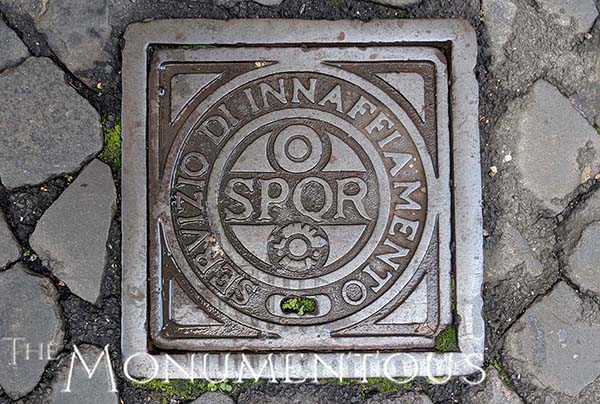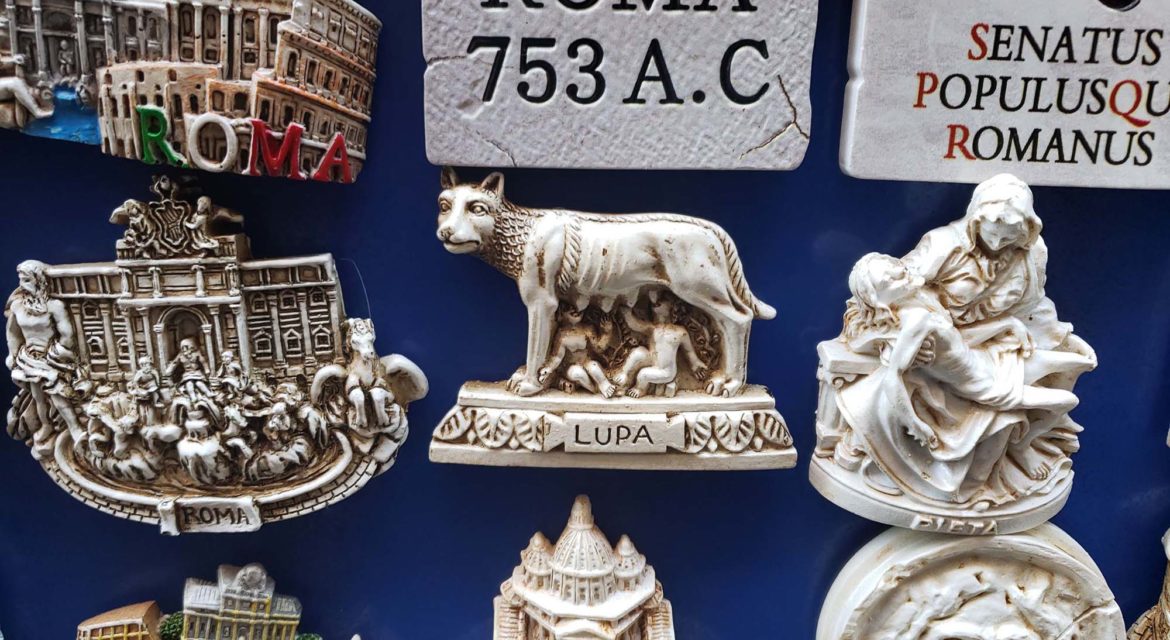 Concepts, people and objects have become synonymous with cities and entire countries in a way that resonates with residents and visitors. Given the history of Rome, it’s no surprise that multiple people, objects and icons have become similarly tied to the city and region. The way in which the Mouth of Truth, SPQR and the Capitoline Wolf are utilized throughout Rome and all of Italy demonstrates the power that such icons can represent in the present and for the future of an entire country.
Concepts, people and objects have become synonymous with cities and entire countries in a way that resonates with residents and visitors. Given the history of Rome, it’s no surprise that multiple people, objects and icons have become similarly tied to the city and region. The way in which the Mouth of Truth, SPQR and the Capitoline Wolf are utilized throughout Rome and all of Italy demonstrates the power that such icons can represent in the present and for the future of an entire country.

Connecting the Past to the Present of Rome
 The Mouth of Truth (Bocca della Verità) is a huge Pavonazzo marble image that weighs more than 2,800 pounds. The mask dates back to around the 1st century AD with a face that is said to represent the sea god Oceanus. A medieval belief said that that the mouth of the marble face would close if anyone put his hand in it and told a lie. It resides at the ancient cattle market in Piazza della Bocca della Verità, specifically along the left side wall of the Santa Maria in Cosmedin church.
The Mouth of Truth (Bocca della Verità) is a huge Pavonazzo marble image that weighs more than 2,800 pounds. The mask dates back to around the 1st century AD with a face that is said to represent the sea god Oceanus. A medieval belief said that that the mouth of the marble face would close if anyone put his hand in it and told a lie. It resides at the ancient cattle market in Piazza della Bocca della Verità, specifically along the left side wall of the Santa Maria in Cosmedin church.
SPQR is an abbreviation that stands for Senātus Populusque Rōmānus. The English translation of this phrase is, “The Roman Senate and People”. The phrase directly reflects how Romans believed that all authority came from the people. The abbreviation appeared on Roman currency, at the end of documents made public by an inscription in stone or metal, and in dedications of monuments and public works. It appears on many monuments throughout the ancient city, including the Arch of Titus.
The Capitoline Wolf is a bronze sculpture depicting a scene from the legend of the founding of Rome. The sculpture shows a she-wolf suckling the mythical twin founders of Rome, Romulus and Remus. While the legend of Romulus and Remus was regarded as a symbol of Rome from ancient times, the actual Capitoline Wolf statue was likely first erected in the 11th or 12 century. Despite that recentness, it has become a symbol of Rome with copies located in cities across the world.
These symbols and icons have become synonymous with the city of Rome in a way that resonates with both residents and tourists. That notoriety has enabled city officials and businesses to utilize these symbols for a variety of purposes.

Economic Gains and Cultural Notoriety
The Mouth of Truth, SPQR and the Capitoline Wolf have been able to generate a notable economic and cultural impact across the Rome and beyond. Whether they’re incorporated into items for sale or utilized to showcase a connection to the legacy of the region, these symbols have become a powerful means of identity for organizations of all types.
 The Mouth of Truth attracts plenty of visitors who audaciously stick their hand in the mouth. It has pulled in audiences from across the world who take part in guided tours that are an important economic driver in Rome. There are often large numbers of people lining up to be photographed with their hand inside the Mouth of Truth.
The Mouth of Truth attracts plenty of visitors who audaciously stick their hand in the mouth. It has pulled in audiences from across the world who take part in guided tours that are an important economic driver in Rome. There are often large numbers of people lining up to be photographed with their hand inside the Mouth of Truth.
SPQR is still used in the municipal coat of arms of Rome and as an abbreviation for the commune of Rome in official documents. It appears on everything from sewer covers to magnets for sale, signifying the incredible reach of the icon.
The Capitoline Wolf was used on both the emblem and the poster for the 1960 Summer Olympics in Rome. The Roman football club A.S. Roma uses it in its emblem as well. Copies of the Capitoline Wolf statue are located in nearly 30 countries, from Argentia to Urugay.
The power of these symbols when it comes to representing Rome in evident, but it’s especially notable when considering how that representation can be tied into the past and future of a city within the country and beyond.

Icons of the Past and Future of Rome
 The Mouth of Truth, SPQR and the Capitoline Wolf have all been utilized by businesses and organizations across Rome to connect the ancient past to the contemporary present of the Eternal City. This connection extends across eras and has come to highlight what it can mean for symbols to significantly impact the identity of a city in the region and the whole world.
The Mouth of Truth, SPQR and the Capitoline Wolf have all been utilized by businesses and organizations across Rome to connect the ancient past to the contemporary present of the Eternal City. This connection extends across eras and has come to highlight what it can mean for symbols to significantly impact the identity of a city in the region and the whole world.

